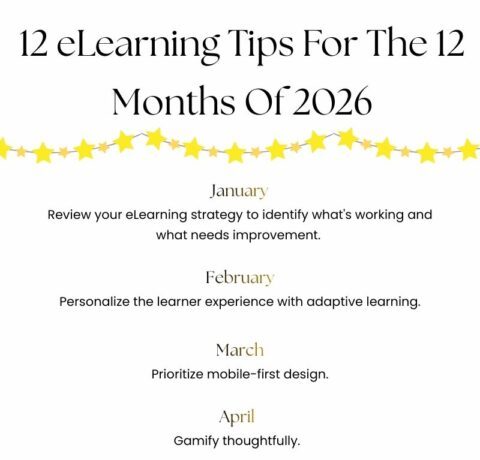10 Steps to eLearning Project Management Success Infographic
Managing an eLearning project from concept to fruition has many elements. Successful management is often the key to achieving a positive outcome.
With over 20 years experience in providing innovative solutions within the learning technology sector, eCom have developed a process to ensure project success. From setting expectations at the beginning of the project through to ensuring a review process is in place, we have identified a number of key steps to achieving success.
Discover 10 steps to eLearning project management success below:
1. Agree expectations early
It is critical to clearly define the scope of the project including the available resources, processes and accountabilities, right at the beginning.
2. Establish roles and responsibilities
Identifying the project team early allows responsibilities and tasks to be understood and schedules to be determined. In turn this ensures the project team work collectively towards delivering the end product.
3. Document the plan
Your eLearning development project plan should include all the activities, schedules and milestones for designing, building, testing and implementing the final product and be communicated to all project team members and stakeholders.
4. Choose the right methodology
Different project management methodologies suit different project but no matter which is chosen they will give the structure to define the tasks, roles, risks and ensure activities are scheduled and delivered on time.
5. Don't be surprised by risks
By identifying any potential risks to the project and assessing their profitability and impact, you can plan for their mitigation or avoid them altogether.
6. Use online tools
Online project management tools can improve collaboration and productivity and the new generation of eLearning tools, such as eNetAuthor, which combine content creation with built-in project management, deliver a much more streamlined content development process.
7. Treat it as a partnership
Some of eCom's most successful learning projects have been run as a partnership between ourselves and our client organisations, with knowledge transfer across the project team.
8. Communicate to keep on track
Requirements for communications should be established, whether that is through regular reporting or a schedule of meetings. With active communications across the project team, information and feedback can be assessed and any project impacts identified.
9. Actively manage change
Planning is an iterative activity and a good development project plan anticipates and accommodates change. By reviewing each element of the plan regularly for changes, progress and problems, the plan can be modified and kept up to date.
10. Review for ongoing improvement
Conduct a project review with all involved to highlight the positive areas of project performance and identify weaker areas where lessons may be learnt.
See also:







You can adjust your cookie preferences here.